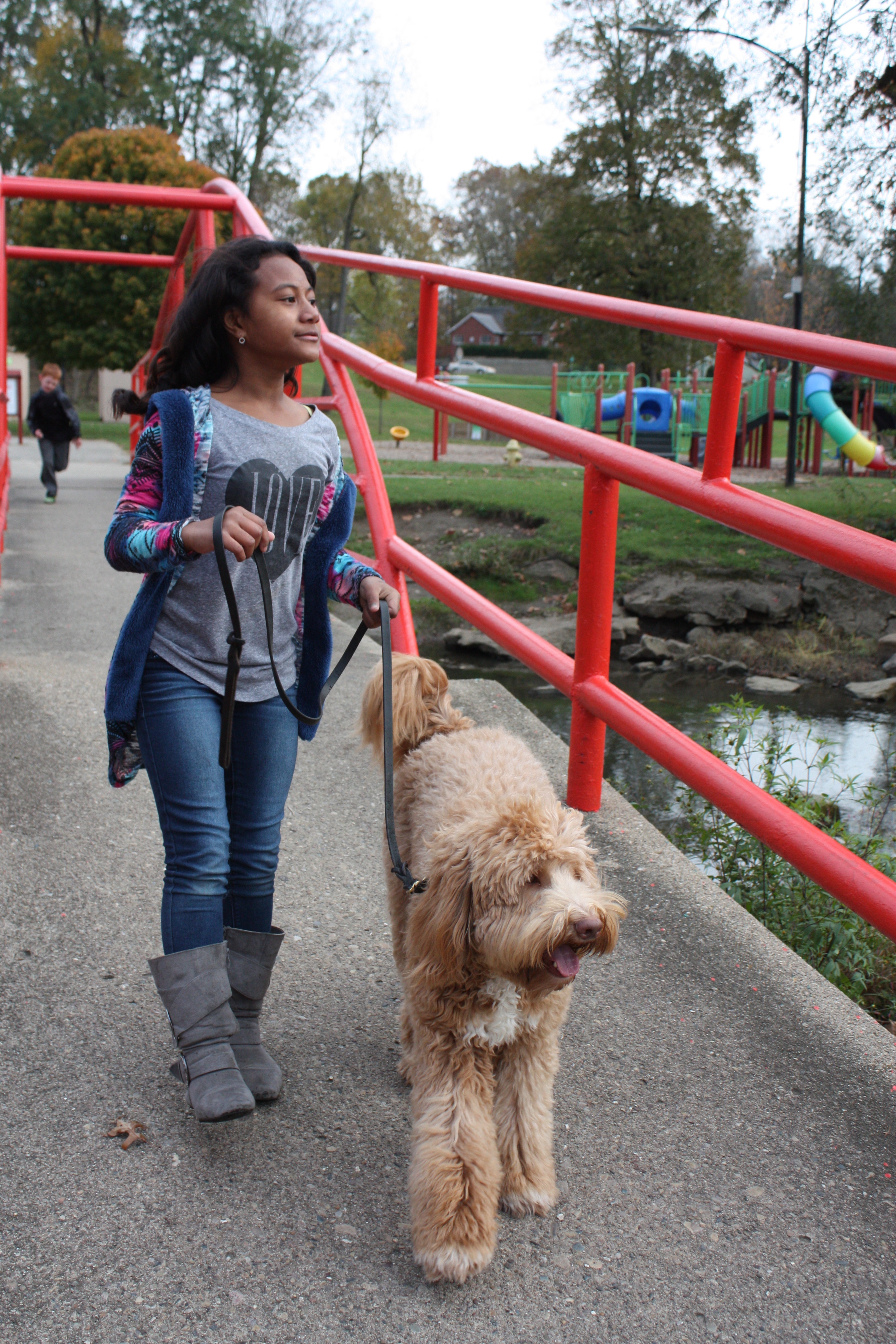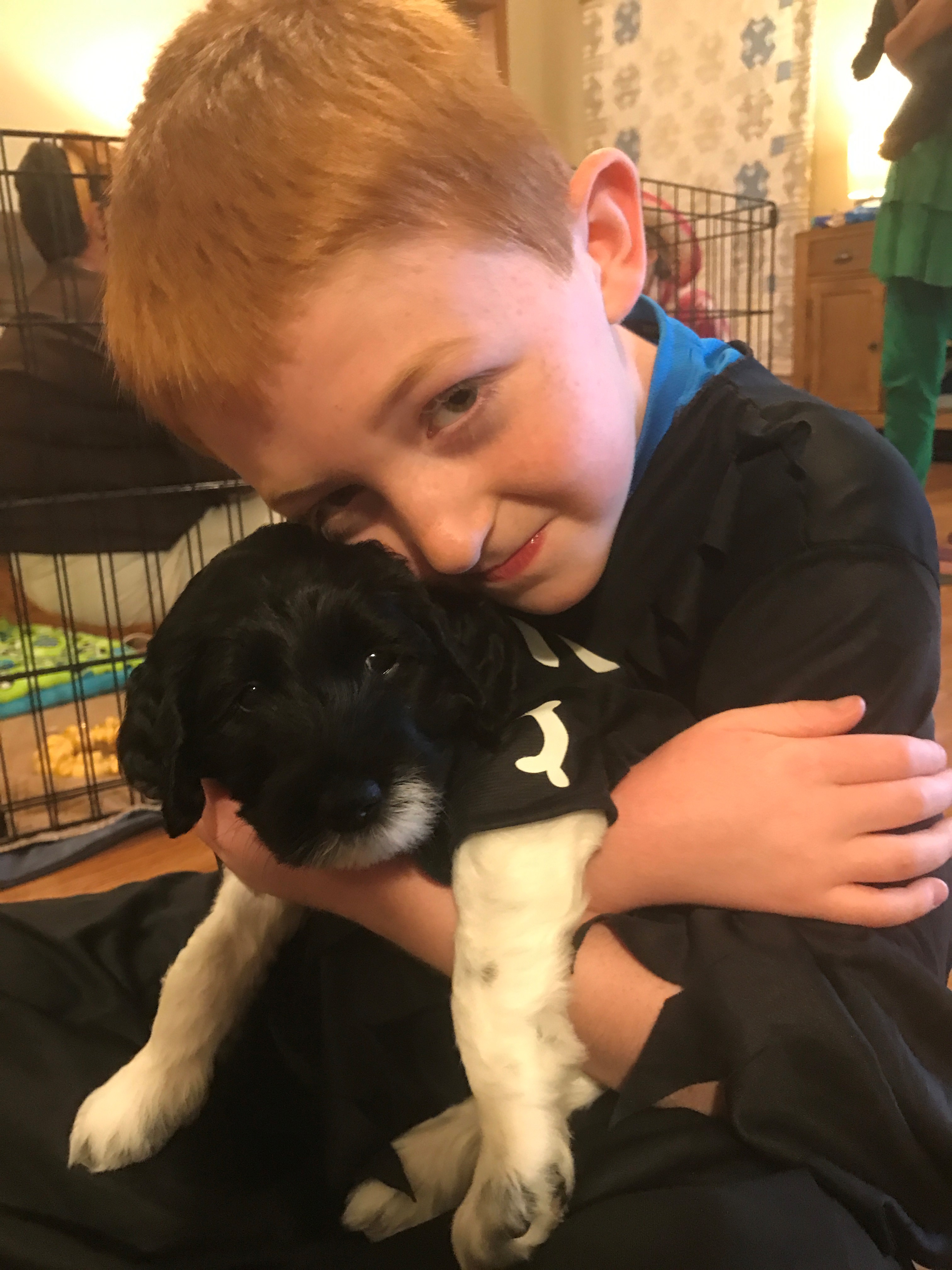One question I always ask parents who have pets in their home during their home study visit is, “What will you do if your child has a fear of dogs?” For many, this is a question they haven’t quite thought about, but I generally get a response similar to the following: “We will do what is best for our child, we will try to work through the fear, but ultimately we will do what we need to do, even if that means finding a new home for our pet.” In many of the countries that MLJ Adoptions works with, dogs are perceived as dirty or dangerous, and live on the streets with diseases, rather than in homes with families. In order to protect them from the dogs on the street, children are often taught to be afraid of dogs, and sometimes told that dogs will bite or eat them. When a child joins their family, these ingrained fears will not magically go away on their own, and will take time, patience, and feelings of safety to overcome.
Personally, I love dogs and think they can be very therapeutic when properly trained and taken care of. Luckily our daughter loves them too. However, when we were preparing to adopt internationally, we knew that our daughter could be afraid of our dogs and we had to plan for what we would do. If your child joins your family and is afraid of dogs, here are some tips to help your child overcome his or her fear.
- Try to accept and understand your child’s fear. Most people are afraid of something, whether it’s spiders, snakes, small spaces, heights, public speaking, or tornados. In general, fears are not rational, so do not try to rationalize it away or minimize it. Start by having open discussions about dogs, and validate your child’s feelings, encourage them to take their time, and let them know that you will be right by their side to keep them safe.
- Be careful what you say. Joking about a child’s fear of dogs may unintentionally create more fear. Words have a lot of influence, so choose what you say very carefully.
- Go slow. Let your child set the pace. Don’t rush exposure to dogs too quickly, but let your child determine when they are ready to engage.
- Gradually introduce your child to dogs by watching TV shows or movies that feature dogs. Visit the library and check out books, and learn more about them from a distance. Watch videos on how to train a dog and how to read their body language.
- Dogs in costumes! Dogs are less threatening when dressed in silly outfits. Cue the clip of the Shih Tzu dressed as an Ewok video!
- View from a distance. Arrange for your child to observe a professionally-trained dog with a dog trainer at a safe distance, such as through a window. Talk about what dogs look like when they’re happy vs. what they do when they feel threatened. Julie Case, Master Dog Trainer, states that it is NOT a good idea to visit a dog park. She states that “Visiting a dog park, could set any progress back to square one. Dogs at the dog park play rough with each other, jump, growl and bark. The child may interpret it as ‘fighting’.” She explains that it may be difficult for the child to understand that the dogs are playing – not fighting; she states that “when dogs play, they reenact behaviors from fighting, but in a playful manner. So going to a dog park is a big NO!”
- Hire a professional therapy dog trainer. A dog trainer can bring a sweet, gentle, well-behaved dog for your child to meet. Ultimate Canine, located in Westfield IN, operated by Julie Case, Master Dog Trainer, has a special program, dedicated to working with children who are fearful of dogs. Julie Case states that they have, “successfully worked and rehabilitated many children. Ultimate Canine has therapy dogs on staff and dog trainers that will help your child overcome their fear of dogs. This company is known for their therapy dogs working around the country at Ronald McDonald Houses, Children’s Hospitals, Schools, Children Developmental Centers etc.” For families, interested in hiring Ultimate Canine, contact Julie Case at 317-443-6019.
- Pet a dog. Start with a well-trained, obedient, calm, and kid-friendly adult dog. Puppies, though very cute and adorable, are typically high-energy and unpredictable. When your child is ready to pet a dog, start with the dog occupied and facing away from the child. Often the dog’s head is more intimidating. Work your way up to petting the dog’s head and prepare your child that the dog may sniff or lick because that is how dogs get to know you better and it is their way of telling you they like you. Julie Case advises to be very careful when moving on to this step and engaging in any contact with a dog when trying to overcome a fear. She warns, “If they think the dog is well trained, but the dog ends up jumping on the child, it will set the child back, and could possibly make the fears even worse to the point of non-repairable. I would only recommend this if they know 150% the dog is very well-trained and well-behaved or they hire a company like us.”
- Remember your manners. Stress the importance of using manners and always ask the dog’s owner if it is okay to pet their dog first. Remind your child to be gentle and kind when interacting with dogs.

DO NOT force your child to interact with dogs. This may be difficult when visiting friends and relatives, but ask them to please put the dog away when your child visits their home. If your child has a fear of dogs, DO NOT get a dog because it will NOT solve the problem and will cause your child to feel unsafe in their own home.
Some fears are deeper and may require therapy to overcome the trauma at the root of the fear. If you’ve tried the strategies outlined above and have not been successful, please seek professional counseling or EMDR therapy for your child to help your child processes and desensitize your child’s trauma.
